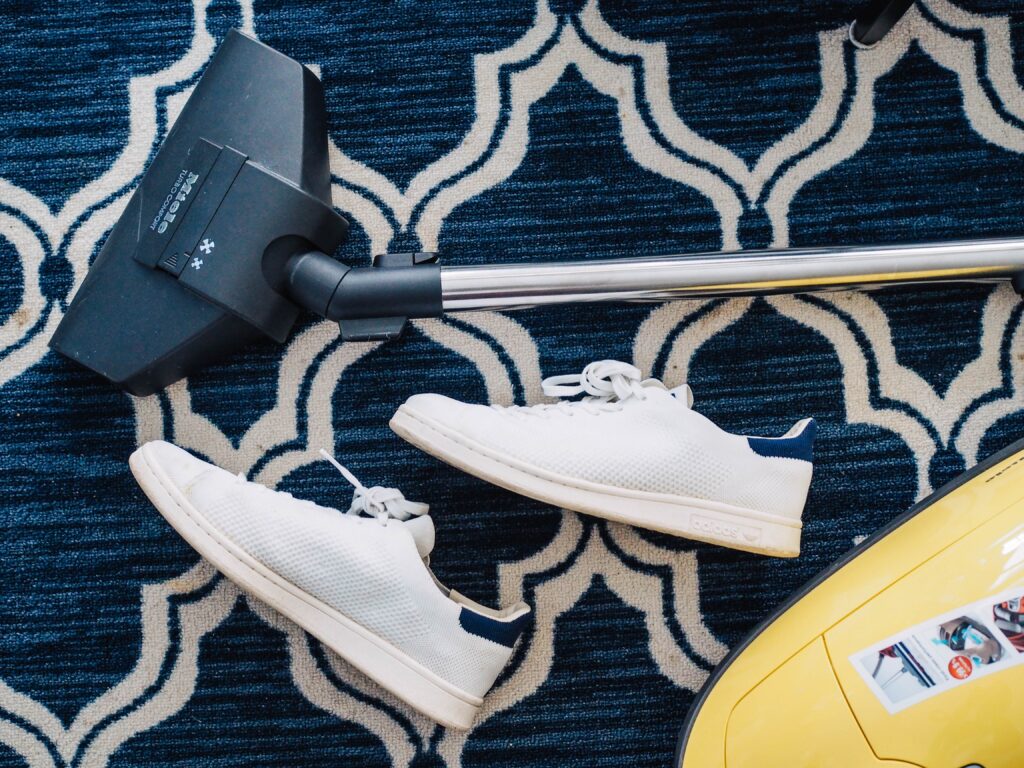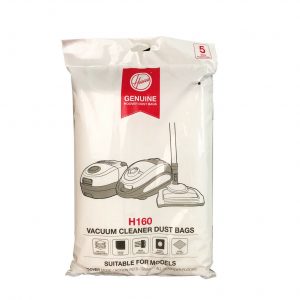Cleaning efficiently and effectively is more important than ever in today’s fast-paced environment. Vacuum attachments can be your secret weapon for obtaining exceptional cleaning, whether you’re a professional cleaner or just someone trying to keep a spotless living area. In this blog, we will look at vacuum attachments, their many sorts, and how they might help you clean more efficiently. So let’s get started.
We all want to clean swiftly and efficiently. Vacuum cleaners are a common home item, but what distinguishes a standard vacuum cleaner from a highly effective cleaning tool is the usage of several attachments. These attachments are intended to tackle a variety of cleaning tasks and surfaces, making your cleaning routine a snap.
What are Vacuum Attachments?
Simply, Vacuum attachments are tools that can be mounted onto your vacuum cleaner to improve its cleaning performance. Even though they appear to be little, they may make a significant impact on your cleaning procedure. They are often designed to reach narrow places, fragile materials, or regions where a regular vacuum cleaner nozzle cannot. So, you can enhance your cleaning experience and obtain greater results by utilizing these extras.
Types of Vacuum Attachments
Crevice Tool
The crevice tool is a long, thin, pointed tool. It is ideal for getting into those difficult-to-reach spots, such as:
- Your furniture’s corners
- The distance between your refrigerator and the wall
- The cracks beneath your bed
- Dust particles on your baseboards
Simply put the crevice tool into the difficult-to-reach area and move it around to loosen dirt and debris. Then, using the main brush attachment, suck it up.
When using the Crevice Tool;
- Pushing the tool too far into the crevice may cause harm to the furniture or the wall.
- If the gap is narrow, you can use a flashlight to assist you see what you’re doing.
- If you have pets, you should use the crevice tool to remove pet hair and dander.
Upholstery Brush
The upholstery brush is a tool with a soft brush and a rubber edge. It is intended to gently clean upholstery such as your couch, chairs, and vehicle seats. It may also be used to eliminate pet hair and dander.
To use the upholstery brush, just insert it into the upholstery and move it around in a circular manner. This will assist in loosening dirt and debris, allowing the vacuum to take it up more readily.
When using an Upholstery brush;
- Pay special attention to the seams and cracks in the upholstery, which are common hiding places for pet hair and dander.
- you should clean your furniture with the upholstery brush once a week if you have pets at home.
- consider using a vacuum cleaner with a wet/dry attachment if your furniture has stubborn specks of dirt.
Dusting Brush
A dusting brush is a soft-bristled brush used to dust surfaces including tables, shelves, and worktops. It is also useful for cleaning ceiling fans and light fixtures.
Simply brush the dusting brush across the surface in a circular manner. This can help remove dust and grime from the surface.
For Better Cleaning with a Dusting Brush;
- Dust in a circular motion to get rid of any dust bunnies.
- Use a feather duster instead of a dusting brush if a lot of dust is present.
- If you have ceiling fans, be sure you dust them regularly to keep dust and filth away.
Turbo Brush
This is a motorized brush used to remove pet hair and other dirt from carpets and rugs. It is also useful for cleaning staircases and other hard-surface flooring.
Simply attach the turbo brush to your vacuum machine and vacuum your carpet or rug as usual. This motor-powered brush will assist in loosening dirt and debris so that it may be picked up more easily.
When using a Turbo Brush;
- If you have pets, clean your carpets and rugs once a week using the turbo brush.
- consider using a vacuum cleaner with a wet attachment to remove stains easily.
- After each usage, be sure to empty the dust cup.
Why You Should Consider a Vacuum Attachment for Your Vacuum Cleaner?
Region-Specific Cleaning
The flexibility of vacuum attachments to target particular locations is one of their key advantages. Instead of using a one-size-fits-all method, you may select the appropriate attachment for the job, making sure that no dirt or dust is missed.
For example, if you are into cleaning your home, you can target specific areas of your home such as;
- Hard-to-reach places, like the corners of your furniture and the space under your bed
- Upholstered furniture, like your sofa and chairs
- Carpets and rugs
- Stairs
- Ceiling fans
- Light fixtures
With different vacuum attachments for a spotless cleaning process.
Versatility
Vacuum attachments can be used for a variety of tasks, such as:
- Vacuuming pet hair
- Dusting surfaces
- Cleaning stairs
- Removing cobwebs
- Cleaning car interiors
Your vacuum cleaner becomes a flexible cleaning tool when you have a range of attachments at your disposal. You may move from cleaning floors to drapes, ceilings, and even the interior of the car without switching equipment.
Improves Air Quality
Vacuum attachments do more than just remove apparent debris; they also help to improve indoor air quality. They contribute to a better living environment by effectively catching dust and allergens. This can help to reduce allergy symptoms and improve your overall health.
How to Properly Use Vacuum Attachments?
- Read the guidelines. It is critical to read the instructions that come with each vacuum attachment before using it. This will assist you in understanding how to correctly use the attachment and avoid harming your vacuum cleaner.
- Select the right attachment for your task. There are several varieties of vacuum attachments, each intended to perform a certain duty. The crevice tool, for example, is used to clean hard-to-reach locations, the upholstery brush is used to clean furniture, and the dusting brush is used to dust surfaces.
- Securely fasten the attachment. Before using the attachment, make sure it is properly attached to the vacuum cleaner. This will help to keep it from coming free and injuring your vacuum cleaner or the surface if you are cleaning.
- Make proper use of the attachment. To confirm that you are using the attachment correctly, follow the instructions that came with it. For example, to avoid becoming stuck, insert the crevice tool at a slight angle into the narrow space.
- Regularly empty the dust cup. Dirt and debris will accumulate in the dust cup while you vacuum. Empty the dust cup regularly to keep it from overflowing and blocking the vacuum cleaner.
- Clean the attachments regularly. Vacuum attachments can become blocked and dusty over time. clean them regularly to keep them from tampering with the normal operation of your vacuum cleaner.

Common Misconceptions About Vacuum Attachments
All vacuum attachments are created equal. This is not correct. There are several varieties of vacuum attachments, each intended to perform a certain duty. For example, the crevice tool should not be used to clean carpets, and the turbo brush should not be used to clean furniture.
You don’t need all the attachments that come with your vacuum cleaner. While some attachments are more specialized and only used on occasion, others are necessary for daily cleaning. The dusting brush, for example, is vital for dusting surfaces, whilst the crevice tool is essential for cleaning hard-to-reach locations.
You can use any attachment on any vacuum cleaner. This is not true. Vacuum attachments are made to operate with certain types of vacuum cleaners. Using an attachment that was not meant for a vacuum cleaner might cause harm to the vacuum cleaner or the attachment.
You can use vacuum attachments to clean anything. Attachments for vacuum cleaners are made to clean various surfaces and materials. For example, you should never use an upholstery brush to clean carpets since it can harm the fibres.
Outro
Vacuum attachments are essential in the pursuit of a cleaner and healthier living environment indoors. They are a wonderful addition to any cleaning procedure because of their adaptability, efficiency, and improved air quality. In your efforts for cleanliness, don’t underestimate the power of these minimal yet powerful tools.
FAQs
Can I use vacuum attachments on any vacuum cleaner?
No, vacuum attachments cannot be used on any vacuum cleaner. Vacuum attachments are made to operate with certain types of vacuum cleaners. Using an attachment that was not meant for a vacuum cleaner might cause harm to the vacuum cleaner or the attachment.
To find out if an attachment is compatible with your vacuum cleaner, check the owner’s manual or contact the manufacturer.
How often should I clean my vacuum attachments?
The frequency with which you should clean your vacuum attachments is determined by how frequently you vacuum and how dusty your home is. Vacuum attachments should be cleaned at least once a month as a general rule.
You may clean your vacuum accessories with a vacuum cleaner brush or a soft cloth. Before storing the attachments, make sure they are totally dry.
Can vacuum attachments replace professional cleaning services?
No, vacuum attachments are not a substitute for professional cleaning services. Professional cleaning services use specialized equipment and procedures to remove dust, dirt, and allergens from areas where vacuum attachments cannot reach.
Vacuum attachments, on the other hand, maybe a useful tool for keeping your home clean in between professional cleanings. They may also be used to clean hard-to-reach parts in your home, such as below furniture.
Are there attachments for pet owners specifically?
Yes, there are attachments for pet owners specifically. These attachments are designed to remove pet hair and dander from carpets, furniture, and other surfaces.
Some of the most popular pet hair attachments include:
- Upholstery brush: This brush has soft bristles that are gentle on furniture but effective at removing pet hair.
- Turbo brush: This brush has rotating bristles that help to loosen and remove pet hair from carpets and rugs.
- Crevice tool: This narrow tool can reach into hard-to-reach places to remove pet hair.
What is the lifespan of vacuum attachments?
The lifespan of vacuum attachments depends on the quality of the attachment and how often it is used. In general, vacuum attachments can last for around 1.5 to 3 years with proper care and cleaning.






